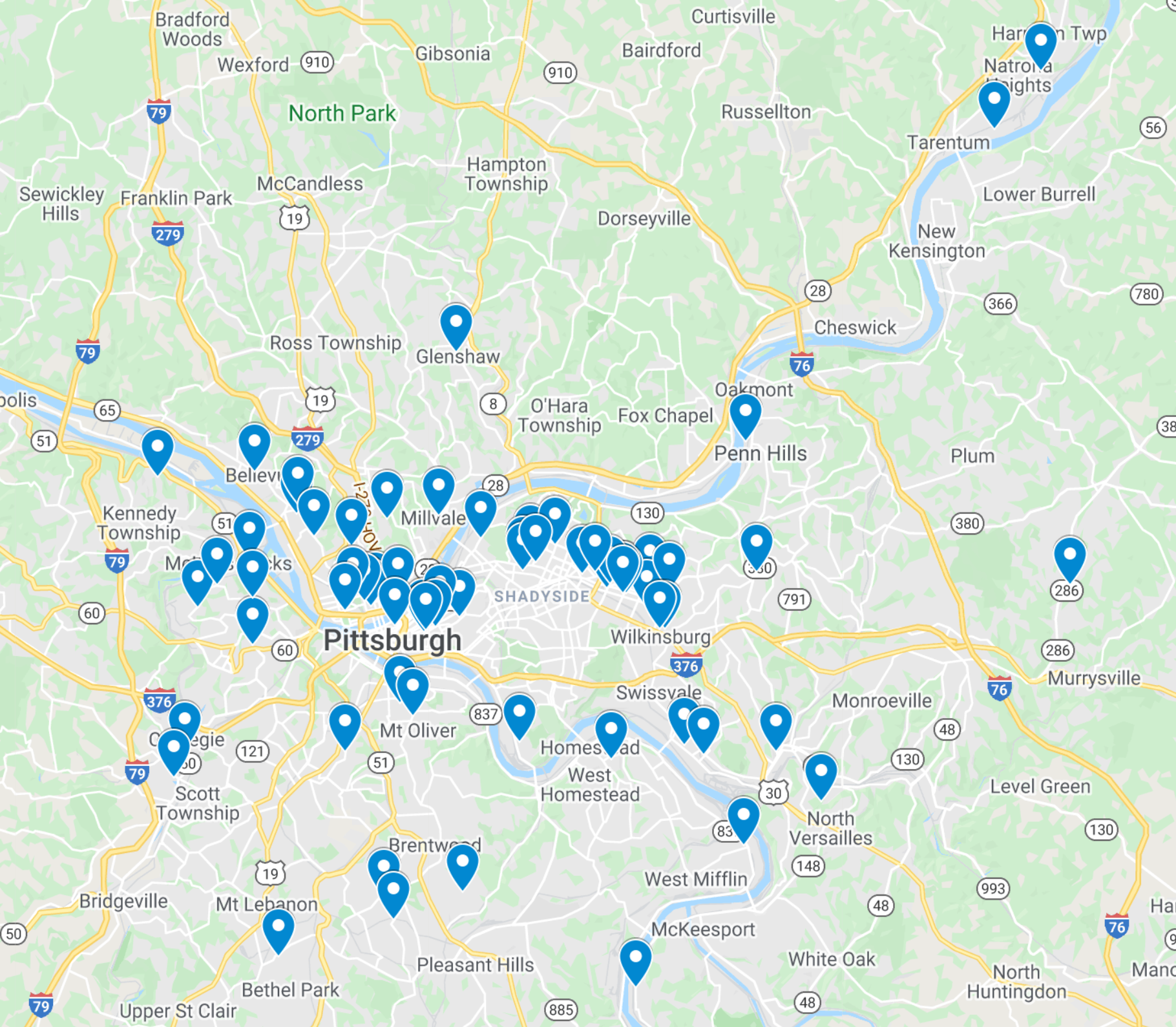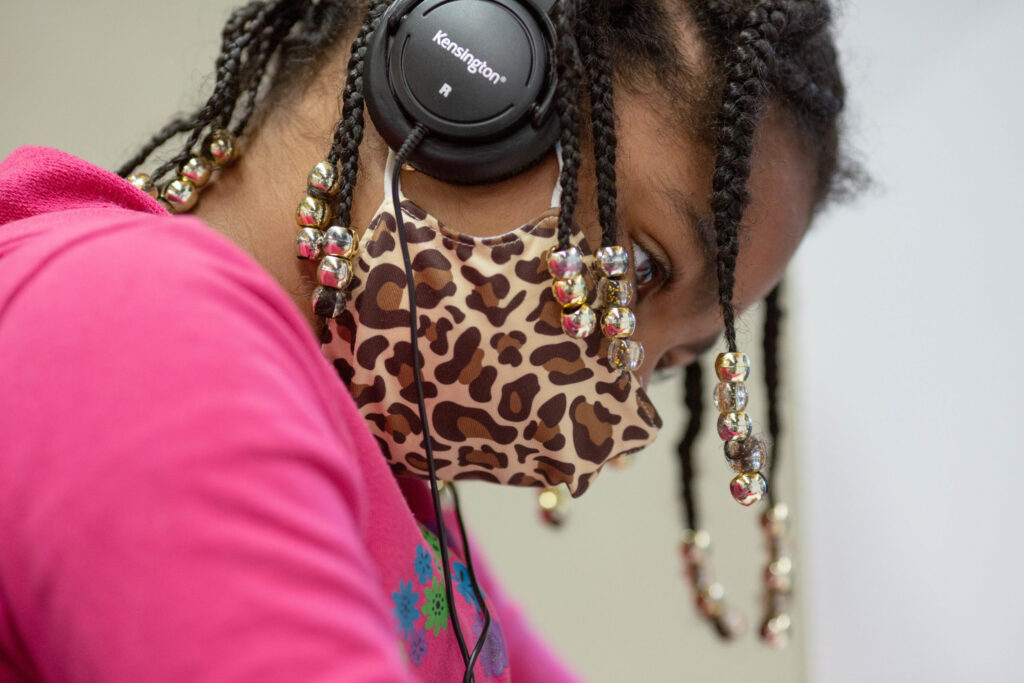Pittsburgh’s Community Learning Hubs filled an immediate need when the pandemic erupted. When public schools suddenly closed, many essential workers had school-age kids who couldn’t stay home alone. Where would these children spend their days?
Summer was months away and yet these kids needed the equivalent of full-time summer camp.
“’Specialty camp’ is what we were calling it at that point,” remembers Dr. Lisa Abel-Palmieri, president and CEO of the Boys & Girls Clubs of Western Pennsylvania, who partnered with Amy Malen, assistant deputy director at Allegheny County’s Department of Human Services, to begin building what became the Community Learning Hubs.
The Boys & Girls Clubs quickly began opening their doors early each morning to host the children of essential workers. The organization did whatever was needed, from distributing grab-and-go lunches to photocopying school worksheets and shepherding kids of all ages through remote learning.
Soon, other organizations joined the collaboration. Places like Bible Center Church in Homewood filled a huge need by hosting summer learning sessions.
And when it became clear that Pittsburgh Public Schools would be closed for in-person learning in the fall, everyone focused on one question, says Tanya Baronti, director of United for Children at the United Way of Southwestern Pennsylvania: “How do we make sure that working families and children have the support they need?”
A wide range of out-of-school-time providers, childcare centers and other community organizations stepped up. “People just activated really quickly,” says Malen. They “were willing to just innovate and rethink what their entire programming looked like” in order to be open during school hours, as well as after school.
One year later, Learning Hubs throughout the region remain a vital resource. They will likely serve as the site of meaningful catch-up work and social connection again this summer—a safe place to play and learn with help from caring adults.
But the Hubs represent possibilities that extend beyond our current, pandemic-focused moment. A new level of community support for learning has emerged that is too valuable to lose when the threat of the virus ebbs.
So the Tomorrow campaign sat down (virtually) with many of those who helped create this collaboration and we asked: What made this ambitious project successful and what aspects of it should continue and grow after the pandemic ends?

Listening and Communicating
The Hubs organizers didn’t make assumptions about what people needed; they asked.
“We called over 2,000 families and had one-on-one conversations with them on the phone,” says Abel-Palmieri. That was just the beginning.
It was clear that basic needs had to be met in order for learning to happen. So the Hubs organizers began offering food distribution. This included bringing food trucks to deliver hot meals to several Housing Authority communities – another opportunity to connect with parents and kids.
“At those events, we could hear straight from the people what their needs were,” Abel-Palmieri says. The conversations were happening in addition to surveys and community meetings.
Thinking Flexibility and Collaboratively
“Families are not monolithic,” says Cara Ciminillo, executive director of the nonprofit Trying Together, a central player in the Learning Hubs initiative. Each family has different needs, so the community must be ready to respond in a wide range of ways.
That’s just what happened.
“It was really sort of a ‘whatever it takes, all hands on deck’ creative problem solving” situation, Malen says. “We had funding with stimulus dollars. United Way had funding. Trying Together is the childcare expert. We had out-of-school time partners and childcare partners … the power of people coming together is pretty incredible.”
Among the solutions they found: Because learners of different ages have different needs, the Hubs provide remote support along with in-person care. So some older students could be at home learning remotely, while staying connected online with adults at a Hub location who help with tutoring or mentoring.
And not all visitors at the Hubs stay all day. Some teens from Sto-Rox and McKeesport learn at their school buildings in the morning and at a Hub in the afternoon.
Growing the Role of OST Providers
Communities in our region are realizing just how essential out-of-school-time (OST) providers are, Baronti says. And connections between OST providers and schools are growing.
Malen agrees: “A lot of the partnerships between out-of-school-time providers and schools have really been strengthened over this last year.”
What might it look like if those partnerships grew even further? Abel-Palmeiri says districts can reach out to the Boys & Girls Clubs and other providers to create custom learning programs for their students.
“Large providers like us and others are willing to come into school districts and help support this summer and into the fall school year in afterschool settings to remediate some of those gaps,” she says.
To pay for this, schools can use up to 20% of their ESSER funding on summer and afterschool programs to remediate learning loss. And ideally, districts will formalize their budding partnerships with out-of-school providers.
The corporate community also pitched in with in-kind donations of masks, sanitizers and school supplies, as well as financial donations to support Learning Hubs at OST locations. It would be valuable for that generosity to continue.
Dedicated funding from the state would also help grow this part of the region’s learning ecosystem. “At this time there, is no dedicated funding toward after school programs and summer programs,” Baronti says, but what if that changed?
“There were a lot of strong partnerships before,” Malen says, but we’ve entered a new era of collaboration and progress.
Abel-Palmieri agrees, and she offers this sentiment to everyone involved: “Let’s not let the progress that we’ve made in terms of collaborating go away.”
